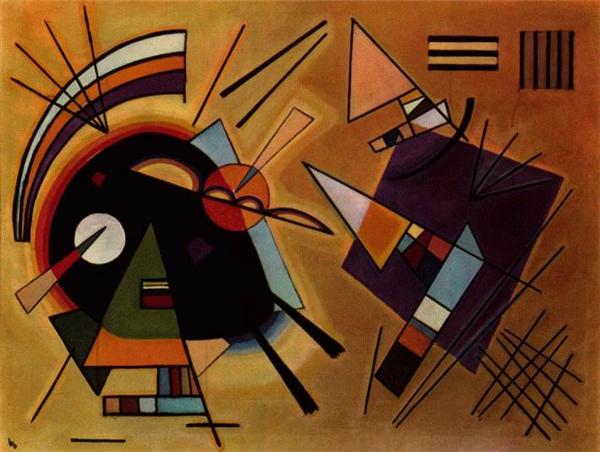
Forming intention and making commitments cuts across the domains of emotion and thinking. Once we act on our commitments, we are in the domain of action.
- We either live with intention or exist by default. [attributed to Kristin Armstrong]
- When you left the house today, you had the intention of putting clothes on and you did. You didn’t try to put your pants on today. You simply put them on. The same has to hold for all of our intentions. We don’t try to be more loving partners. We make the intention, and we act on it. [attributed to Patch Adams]
Every purposeful action begins with an intention and an idea. A commitment is an intention fortified by thought and experience.
Real
True Narratives
Technical and Analytical Readings
- Uriah Kriegel, ed., Phenomenal Intentionality (Oxford University Press, 2013).
- John R. Searle, Intentionality: An Essay in the Philosophy of Mind (Cambridge University Press, 1983).
- Angela Mendelovici, The Phenomenal Basis of Intentionality (Oxford University Press, 2018).
Photographs
Documentary and Educational Films
Imaginary
Fictional Narratives
Poetry
Music: Composers, artists, and major works
William Byrd’s keyboard music is serious and deliberate, suggesting intention formation and/or commitment-making. Ton Koopman (54’), Rosalinde Haas (70’), Colin Tilney (52’), and Tom Pixton (52’), have recorded this music.
Music of serious intention:
- Johannes Brahms, Vier ernste Gesänge (Four Serious Songs), Op. 121 (1896) (lyrics and analysis) (approx. 16-20’), “. . . is a cycle of four songs for bass and piano . . .” Brahms told his publisher, “they are damned serious and at the same time so godless that the police could ban them – if the words were not all in the Bible.” Top recordings are by Kipnis & Moore in 1936, Hotter & Moore in 1951, Fischer-Dieskau & Demus in 1958, Baker & Previn in 1977, Quasthoff & Zeyen in 2000, Gerhaher & Huber in 2002, Williams & Vignoles in 2016, and Goerne & Eschenbach in 2016.
- Johann Nepomuk Hummel, Quintet for Piano, Viola, Cello & Double Bass in E-flat Major, Op. 87 (1802) (approx. 22-24’)
- Andrew Rudin, Sonata for Violin & Piano (2001) (approx. 20’); Sonata for Viola & Piano (2007) (approx. 23’); Sonata for Cello & Piano (2010) (approx. 15’)
- Roy Harris, Symphony No. 3 (1937) (approx. 17-18’)
- Roy Harris, Symphony No. 5 (1942) (approx. 24’)
- William Schuman, Symphony No. 3 (1941) (approx. 31’)
- Alberto Ginastera, String Quartets (approx. 70’ in total): No, 1, Op. 20 (1958, rev. 1968) (approx. 23’); No. 2, Op. 26 (1958) (approx. 28’); No 3, for soprano & string quartet Op. 40 (1973) (approx. 25’)
- Albéric Magnard, Violin Sonata in G Major, Op. 13 (1901) (approx. 40’)
- Gabriel Fauré, String Quartet in E Minor, Op. 121 (1924) (approx. 22-25’)
- Arne Nordheim, Partita for Paul, for violin & electronics (inspired by Paul Klee’s paintings) (1985) (approx. 11-17’)
- Nicolas Flagello, Piano Sonata, Op. 38 (1962) (approx. 19’) (mvt 1, mvt 2, mvt 3); Declamation for Violin & Piano (1967) (approx. 9’); Prelude, Ostinato and Fugue for Piano, Op. 30 (1960) (9’)
- Irving Fine, Notturno for Strings & Harp (1951) (approx. 14’); Partita for Wind Quintet (1949) (approx. 15-18’); String Quartet (1952) (19’); Symphony 1962 (1962) (approx. 23-26’); The Hour Glass (1949) (approx. 15’)
- Juan Crisóstomo de Arriaga, Symphonie À Grand Orchestre en Ré (Symphony in D Major) (1824) (approx. 29’): clearly a young composer’s work (Arriaga was 18), serious in tone
- Giorgio Federico Ghedini, Marinaresca a baccanale (Sea Piece and Bacchanale) (1933) (approx. 17-18’)
- Axel Ruoff, Organ Symphony No. 2 (2016) (approx. 37’)
- Johannes Brahms, Piano Sonata No. 2 in F-sharp Minor, Op. 2 (1853) (approx. 25-29’)
- Grażyna Bacewicz, Piano Sonata No. 2 (1952) (approx. 17’)
- George Enescu, String Quartet No. 1 in E-flat Major, Op. 22, No. 1 (1920) (approx. 45’)
Dave Brubeck was a jazz pianist who developed a clear idea of what he wanted: to lead piano-forward jazz ensembles. His albums reflecting this vision include:
- “Time Out” (1959) (39’)
- “Gone with the Wind” (1959) (40’)
- “Countdown: Time in Outer Space” (1961) (42’)
- “Live from Vienna 1967” (1967) (43’)
Other albums:
- Marilyn Lerner, Ken Filiano and Lou Grassi, “Intention” (2020) (74’)
- Milton Suggs, “Pure Intention” (2024) (59’): “. . . Suggs tells stories set to melodies by harmonically sophisticated, upper echelon composers . . .”
Music: songs and other short pieces
- Slambovian Circus of Dreams, “Light a Way” (lyrics)
- The Script, “Hall of Fame” (lyrics)
- Blaise Siwula, Nicolas Letman-Burtinovic & Jon Panikkar, “Intention”
Visual Arts
Film and Stage
- I Vitteloni (The Young and the Pasionate), Fellini’s autobiographical film about “a half-dozen twentysomething layabouts”, one of whom breaks free toward a more purposeful life